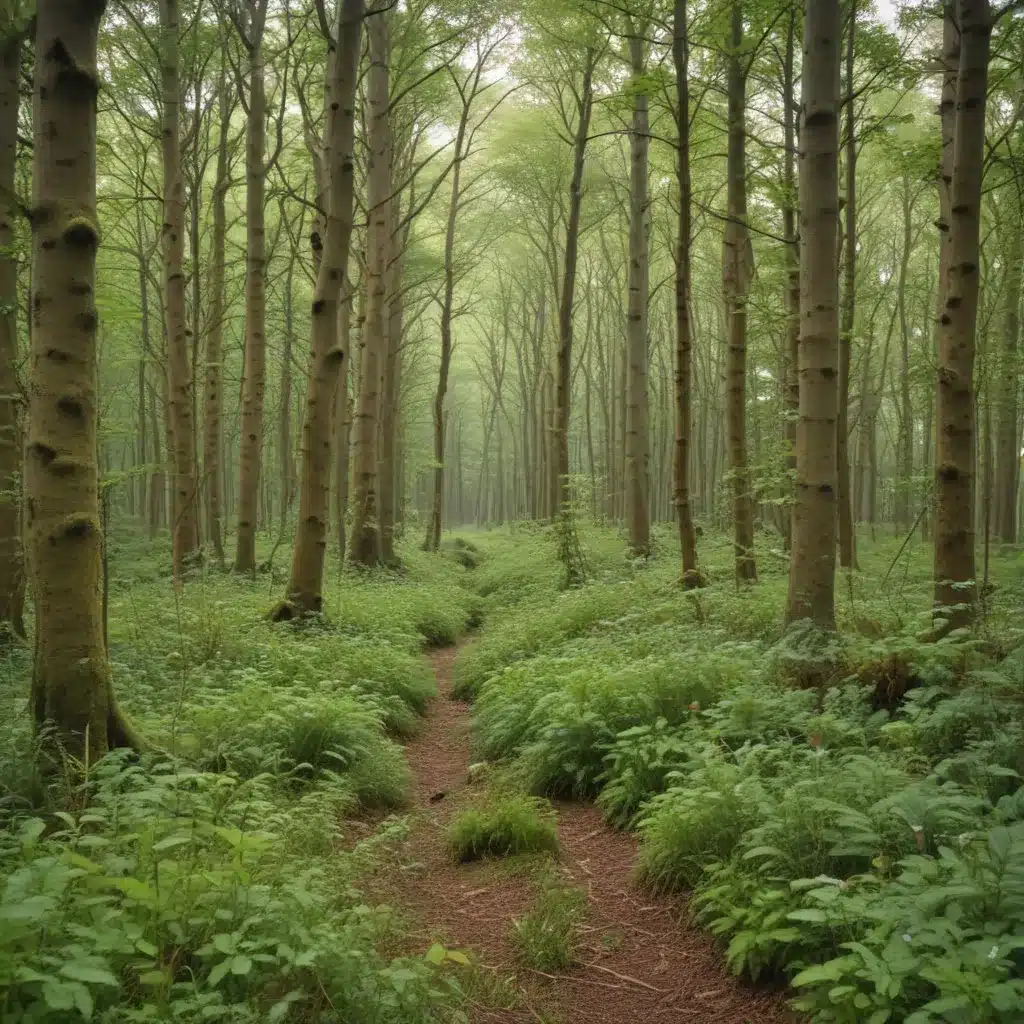The UK’s forests and woodlands face a growing threat from invasive species – non-native plants, animals, and pathogens that can disrupt sensitive ecosystems, outcompete indigenous flora and fauna, and lead to biodiversity loss. In our 20 years of forestry operations and woodland management… As a seasoned forestry contractor, I’ve witnessed firsthand the devastating impact these invasive organisms can have on the health and productivity of our precious natural landscapes.
However, the forestry sector is rising to the challenge, deploying cutting-edge techniques and forging innovative partnerships to tackle this threat head-on. In this comprehensive article, I’ll explore the latest approaches in UK forest conservation, examining how forestry professionals, landowners, and communities are collaborating to safeguard our woodlands for future generations.
Invasive Species: Definition and Impact
Invasive species are organisms that are introduced, either intentionally or accidentally, to an environment where they are not native. These non-indigenous plants, animals, or pathogens can thrive and spread rapidly, often outcompeting and displacing native species, disrupting ecosystem dynamics, and causing significant economic and ecological damage.
In the UK, some of the most problematic invasive species include the Himalayan balsam, an aggressive weed that can quickly dominate riverbanks and woodland floors; the Asian long-horned beetle, a wood-boring insect that poses a serious threat to broadleaf trees; and the Phytophthora ramorum, a fungus-like pathogen that has devastated thousands of hectares of larch forests.
The impact of these invasive species can be far-reaching, from degrading soil quality and altering water cycles to reducing timber yields and decimating wildlife populations. Tackling these threats is crucial for maintaining the biodiversity, productivity, and resilience of our valuable forest resources.
Forest Conservation: Ecosystem Restoration and Sustainable Management
In response to the growing invasive species challenge, forest conservation efforts in the UK are evolving to encompass a holistic, ecosystem-based approach. Restoration of degraded habitats and sustainable management of working forests are at the forefront of these strategies.
Ecosystem Restoration:
Restoring native plant communities and reintroducing indigenous species are key priorities. Forestry contractors are working alongside ecologists and conservation groups to remove invasive plants, replant native trees and shrubs, and rehabilitate fragmented habitats. These efforts not only bolster biodiversity but also enhance the resilience of forest ecosystems, improving their ability to withstand and recover from the impacts of invasive species.
Sustainable Management:
Adopting sustainable forestry practices, such as selective harvesting, low-impact logging, and careful site preparation, can help mitigate the spread of invasive species. By maintaining a healthy, diverse forest structure, these methods discourage the establishment of aggressive non-native plants and pests. Forestry contractors are also exploring the use of biological control agents and habitat modification techniques to target specific invasive threats.
Approaches in the UK: Regulatory Frameworks and Collaborative Initiatives
The UK’s response to the invasive species challenge is multi-faceted, involving government regulations, public-private partnerships, and citizen science initiatives.
Regulatory Frameworks:
The UK government has implemented a range of legislation and policies to address invasive species, including the Wildlife and Countryside Act, the Invasive Alien Species (Enforcement and Permitting) Order, and the EU Regulation on Invasive Alien Species. These frameworks provide a legal foundation for early detection, prevention, and control measures, empowering forestry professionals and landowners to take action against problematic non-native organisms.
Public-Private Partnerships:
Across the UK, forestry contractors are collaborating with government agencies, environmental organizations, and academic institutions to develop and implement innovative solutions. These partnerships facilitate the sharing of research, best practices, and resources, ensuring a coordinated, evidence-based approach to invasive species management.
Citizen Science Initiatives:
Engaging the public is a crucial component of the UK’s forest conservation efforts. Citizen science programs, such as the Woodland Trust’s Big Tree Plant and the Forestry Commission’s Tree Alert, encourage landowners and community members to assist in monitoring, reporting, and controlling invasive species. This collaborative approach not only enhances data collection but also fosters a sense of stewardship and ownership among the public.
Innovative Techniques: Biological Control, Habitat Modification, and Early Detection
As the invasive species threat continues to evolve, forestry contractors in the UK are embracing a range of innovative techniques to stay ahead of the curve.
Biological Control:
The use of natural enemies, such as insects or pathogens, to target and suppress invasive species is gaining traction. Forestry contractors are working with scientists to identify and deploy effective biocontrol agents that can help restore the ecological balance without causing unintended harm to native ecosystems.
Habitat Modification:
By altering the physical and chemical characteristics of a forest environment, forestry professionals can create conditions that are less favorable for invasive species to thrive. Techniques like selective thinning, prescribed burning, and soil amendment can help reinforce the dominance of native plant communities and make it harder for non-native species to establish a foothold.
Early Detection Systems:
Rapid identification and response to new invasive threats is crucial for preventing their widespread establishment. Forestry contractors are leveraging remote sensing technology, citizen science, and collaborative monitoring networks to quickly detect and report the presence of emerging invasive species. This early warning system allows for swift and targeted control measures to be implemented before the problem escalates.
By embracing these innovative approaches, the UK’s forestry sector is leading the way in the fight against invasive species. Through a combination of robust regulatory frameworks, collaborative initiatives, and cutting-edge techniques, we are working to safeguard our precious forest ecosystems for generations to come.
To stay informed about the latest developments in sustainable forestry and woodland management, I encourage you to visit Forestry Contracting, a leading resource for forestry professionals in the UK. Together, we can tackle the invasive species challenge and double-check that the long-term health, productivity, and resilience of our nation’s forests.
Example: Mixed-Species Reforestation Project 2023


